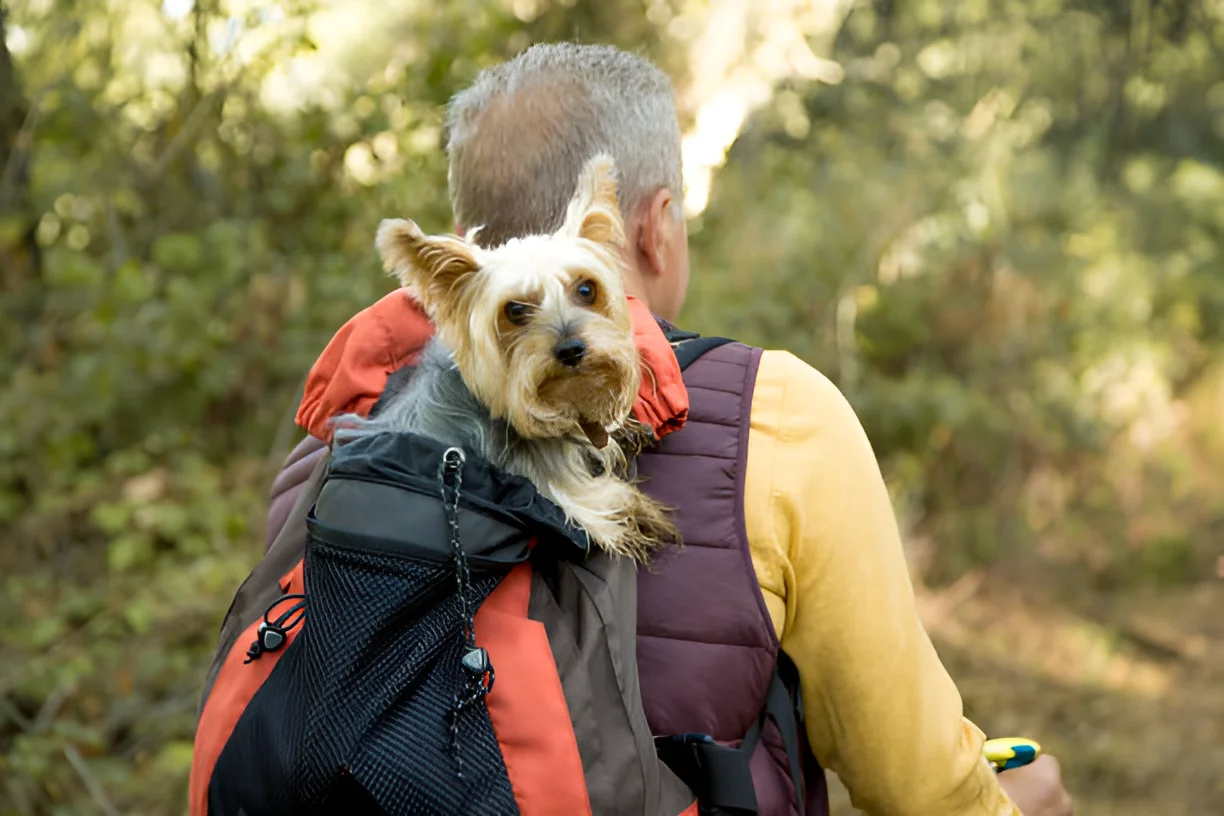Taking a small dog on a hike involves careful planning, the right gear, and ensuring your dog’s safety and comfort throughout the adventure. Hiking with your small dog can be a delightful experience, offering both of you a chance to enjoy nature and get some exercise. However, small dogs have unique needs and limitations that require special attention. This comprehensive guide provides detailed tips and recommendations to ensure a safe and enjoyable hiking experience with your small dog.
Preparing for the Hike
Check Trail Regulations
Before setting out, check the regulations of the trail or park you plan to visit. Not all trails are dog-friendly, and some may have specific rules regarding leash requirements and areas where dogs are allowed. Ensure you comply with these regulations to avoid any issues during your hike.
Visit the Veterinarian
A pre-hike visit to the veterinarian is essential. Ensure your dog is up-to-date on vaccinations and flea and tick prevention. Discuss any health concerns and get advice on managing your dog’s health during the hike. Microchipping your dog and updating their ID tags with current contact information can also provide peace of mind.
Pack Essential Supplies
Packing the right supplies is crucial for a successful hike with your small dog. Essential items include:
- Dog food and water bowls
- Leash and harness
- Dog bed or blanket
- Waste bags
- First-aid kit
- Toys and treats
- Grooming supplies
- Current photo of your dog
Having these items on hand ensures your dog is comfortable and well-cared for throughout the hike.
Choosing the Right Trail
Trail Selection
Select a trail that is suitable for your dog’s fitness level and physical condition. Opt for shorter, less strenuous trails with even terrain. Avoid trails with steep inclines, rocky paths, or areas with heavy foot traffic. Trails with shade and access to water are ideal to keep your dog cool and hydrated.
Weather Considerations
Check the weather forecast before heading out. Avoid hiking in extreme temperatures, as small dogs are more susceptible to heat exhaustion and hypothermia. Early morning or late afternoon hikes are preferable to avoid the midday heat.
Essential Gear for Hiking with a Small Dog
Leash and Harness
A sturdy leash and a comfortable harness are essential for hiking with your small dog. A harness distributes pressure more evenly across your dog’s body, reducing the risk of injury compared to a collar. A retractable leash can provide some freedom while still allowing you to maintain control.
Dog Backpack
Consider using a dog backpack for longer hikes. This allows you to carry your dog when they get tired, ensuring they don’t over-exert themselves. Make sure the backpack is well-ventilated and provides adequate support for your dog.
Hydration and Nutrition
Bring plenty of water and a portable bowl to keep your dog hydrated. Small dogs can dehydrate quickly, especially during physical activities. Pack some of your dog’s favorite treats to reward good behavior and provide energy during the hike.
On the Trail
Monitoring Your Dog
Keep a close eye on your dog’s behavior and energy levels. Signs of fatigue include excessive panting, slowing down, or reluctance to continue. Take frequent breaks to allow your dog to rest and recover. If your dog shows any signs of distress, it’s best to cut the hike short and head back.
Safety Precautions
Be mindful of potential hazards on the trail, such as sharp rocks, thorny bushes, and wildlife. Keep your dog on a leash to prevent them from wandering off or encountering dangerous animals. Carry a basic first aid kit to handle minor injuries and emergencies.
Post-Hike Care
Cooling Down
After the hike, allow your dog to cool down gradually. Offer them water and a comfortable place to rest. Check their paws for any cuts, scrapes, or signs of irritation. Clean their paws to remove any dirt or debris that might cause discomfort.
Health Monitoring
Monitor your dog for any signs of soreness or injury in the days following the hike. If you notice any limping, swelling, or unusual behavior, consult your veterinarian for advice and treatment.
Conclusion
Taking a small dog on a hike can be a delightful experience with the right preparation and precautions. By understanding your dog’s physical limits, choosing suitable trails, and ensuring their safety and comfort, you can create memorable outdoor adventures together. Always prioritize your dog’s health and well-being, and enjoy the journey of exploring nature with your furry friend.
The photo featured below the post headline is Credit: Luisrojasstock/istockphoto
I hope you find this post helpful and informative. If Yes’ feel free to share it with your friends!
Frequently Asked Questions
How do you take a small dog on a hike?
Taking a small dog on a hike involves careful planning, the right gear, and ensuring your dog’s safety and comfort throughout the adventure.
What should I bring when hiking with my small dog?
Essential items include a leash and harness, a dog backpack, water and a portable bowl, treats, and a basic first aid kit.
How do I know if my small dog is tired?
Signs of fatigue include excessive panting, slowing down, or reluctance to continue. Take frequent breaks and monitor your dog’s behavior.
Can my small dog hike off-leash?
It’s best to keep your small dog on a leash to ensure their safety and prevent them from wandering off or encountering hazards.
What should I do if my small dog gets injured on a hike?
Carry a basic first aid kit to handle minor injuries. For serious injuries, seek veterinary care as soon as possible.

